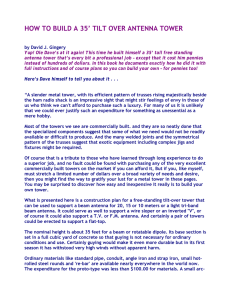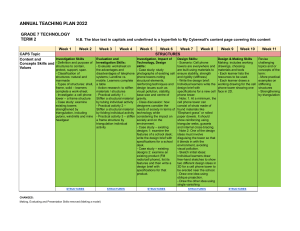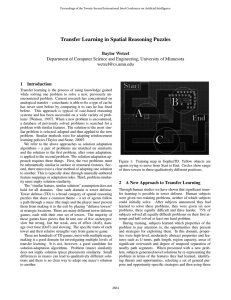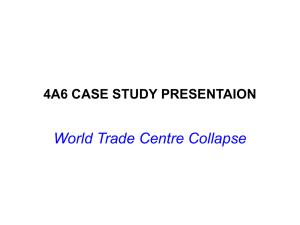Lecture 4 - summary real
advertisement
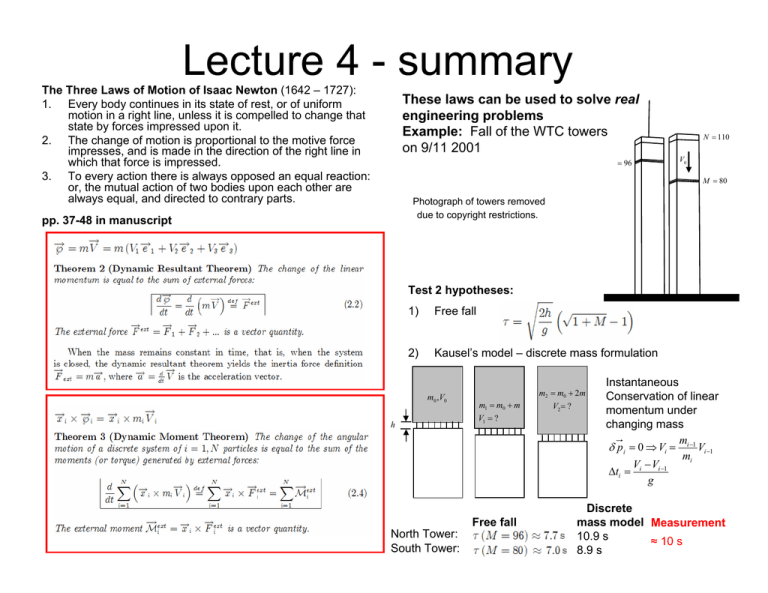
Lecture 4 - summary The Three Laws of Motion of Isaac Newton (1642 – 1727): 1. Every body continues in its state of rest, or of uniform motion in a right line, unless it is compelled to change that state by forces impressed upon it. 2. The change of motion is proportional to the motive force impresses, and is made in the direction of the right line in which that force is impressed. 3. To every action there is always opposed an equal reaction: or, the mutual action of two bodies upon each other are always equal, and directed to contrary parts. These laws can be used to solve real engineering problems Example: Fall of the WTC towers on 9/11 2001 = 96 N = 110 V0 M = 80 Photograph of towers removed due to copyright restrictions. pp. 37-48 in manuscript Test 2 hypotheses: 1) Free fall 2) Kausel’s model – discrete mass formulation m0 ,V0 h North Tower: South Tower: m2 = m0 + 2m m1 = m0 + m V1 = ? Free fall V2 = ? Instantaneous Conservation of linear momentum under changing mass m δ p i = 0 ⇒ Vi = i−1 Vi−1 mi Vi −Vi−1 Δti = g Discrete mass model Measurement 10.9 s ≈ 10 s 8.9 s



